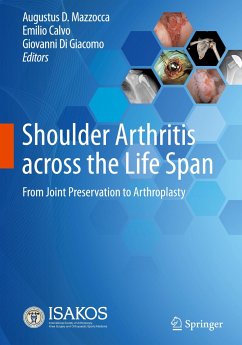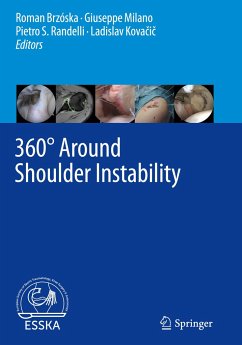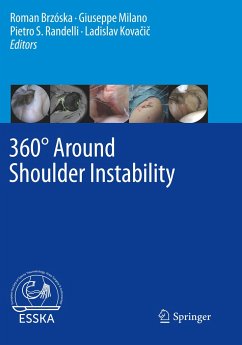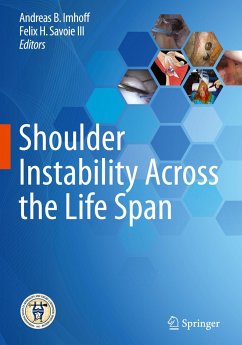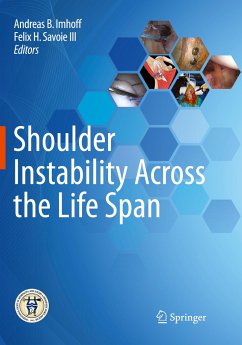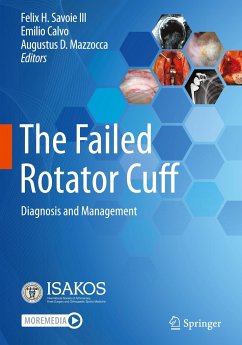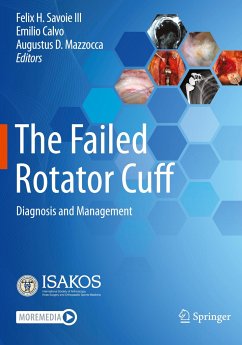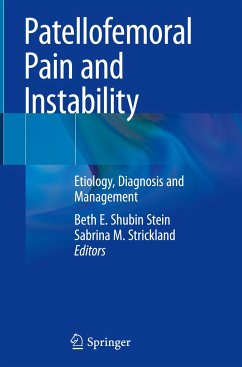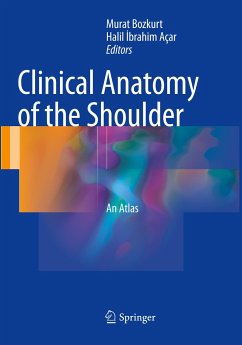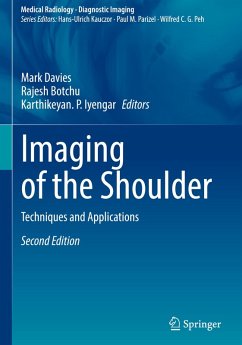
Shoulder Arthritis across the Life Span
From Joint Preservation to Arthroplasty
Herausgegeben: Mazzocca, Augustus D.; Calvo, Emilio; Di Giacomo, Giovanni
Versandkostenfrei!
Versandfertig in 1-2 Wochen
75,99 €
inkl. MwSt.

PAYBACK Punkte
38 °P sammeln!
This book comprehensively covers the diagnosis, classification, assessment, and management of shoulder arthritis, a condition with increasing incidence that affects people of all ages. In a multidisciplinary format, it discusses imaging, laboratory testing, nutrition, surgery and rehabilitation.The first part of the book covers conservative treatments, followed by various minimally invasive treatments and specific techniques in the second part. The subsequent parts of the book focus on joint replacement, including alternative options to traditional arthroplasty. Each part is further divided by...
This book comprehensively covers the diagnosis, classification, assessment, and management of shoulder arthritis, a condition with increasing incidence that affects people of all ages. In a multidisciplinary format, it discusses imaging, laboratory testing, nutrition, surgery and rehabilitation.
The first part of the book covers conservative treatments, followed by various minimally invasive treatments and specific techniques in the second part. The subsequent parts of the book focus on joint replacement, including alternative options to traditional arthroplasty. Each part is further divided by age group, addressing specific considerations unique to each population. The final part explores new technologies applied to shoulder arthroplasty.
Published in collaboration with ISAKOS, this book provides a thorough discussion on how to prevent failure, diagnose, and manage shoulder arthritis in patients of all ages. Written by leading international shoulder experts,it is an essential resource for shoulder surgeons, rehabilitators, and other healthcare practitioners.
The first part of the book covers conservative treatments, followed by various minimally invasive treatments and specific techniques in the second part. The subsequent parts of the book focus on joint replacement, including alternative options to traditional arthroplasty. Each part is further divided by age group, addressing specific considerations unique to each population. The final part explores new technologies applied to shoulder arthroplasty.
Published in collaboration with ISAKOS, this book provides a thorough discussion on how to prevent failure, diagnose, and manage shoulder arthritis in patients of all ages. Written by leading international shoulder experts,it is an essential resource for shoulder surgeons, rehabilitators, and other healthcare practitioners.



